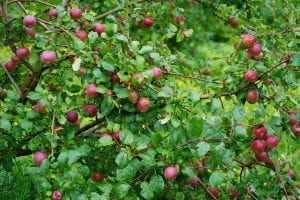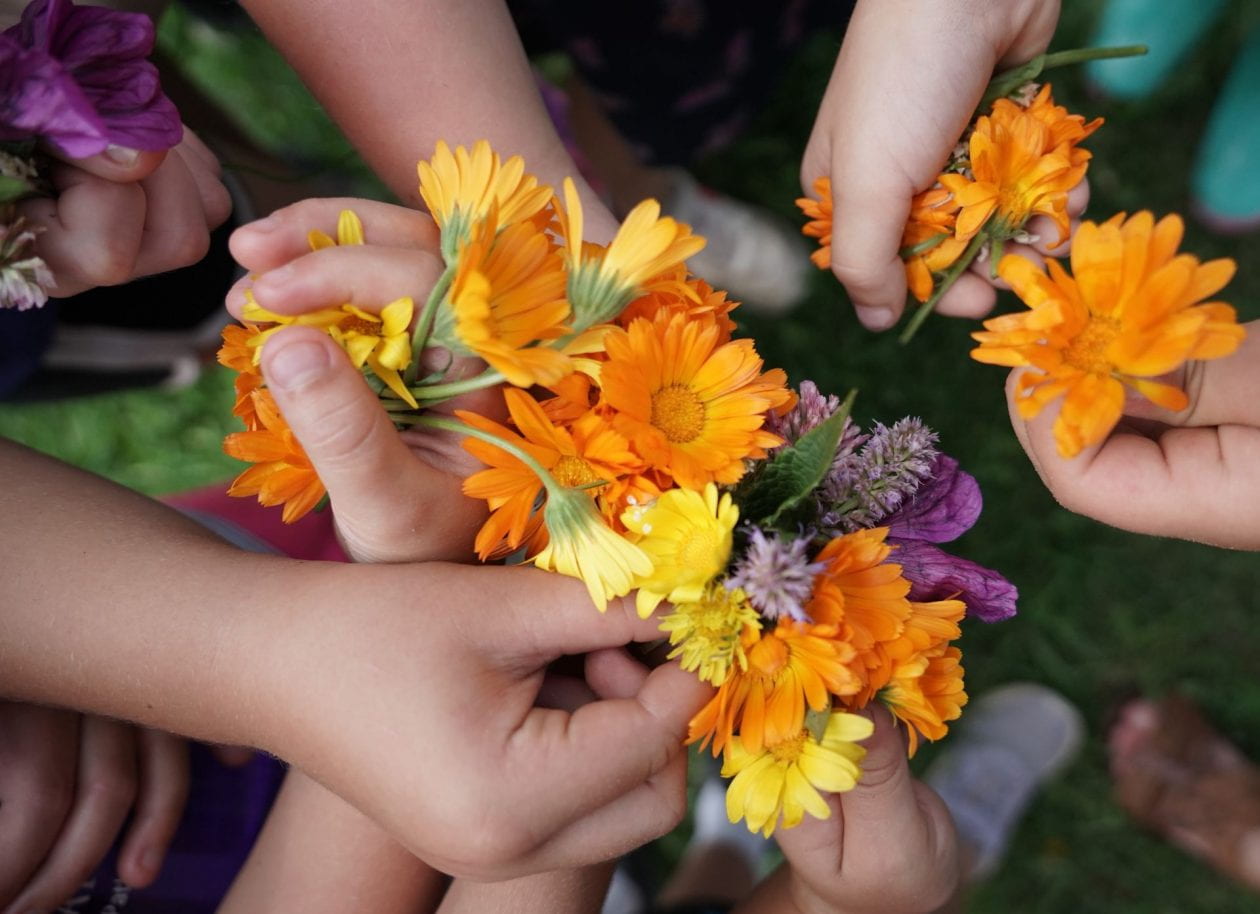Last week, the Farm Day Campers learned about wild edible and medicinal plants during Medieval Week at the Extension Learning Farm. Lessons about Medieval times can favor the 1% – the knights and royalty of that era. While it’s true that armor and castles played a big role, I wanted to talk about peasant farming and about the plants that humans depended on in those times.
The vast majority of people in Medieval Europe were rural peasants living on isolated farms or small villages. For these people, plants held the key to nutrition, healing, and a modicum of hygiene. Without books to consult, or even the ability to read, these peasants shared and handed down knowledge of plants and their uses.
First, I set the stage. Imagine there are no grocery stores with their coolers and fridges and endless packages of the same products year-round. There are no hospitals, or drugstores, no antibiotics. Imagine there are no showers, toothpaste, deodorant, bug spray, sunscreen, and you often see mice and rats in the fields and even your living quarters. Imagine you need to store food for winter without canning jars, or freezers. Your garden and your knowledge of wild plants is essential for survival.
You’re a peasant, one of the lucky ones who hasn’t fallen victim to the plague that killed 35 million people. You can’t read or write so you have to learn all you can from others and remember it. You tend a kitchen garden for vegetables and herbs and an infirmary garden for plants used in medicine. You also collect herbs for use in the home as dyes, for tanning leather, deterring vermin, and covering up odors.

Turns out many of the plants we grow in our high tunnel at the Learning Farm were also grown during Medieval times (500 – 1500AD). This includes cauliflower, onions, leeks, cabbage, garlic, carrots, radishes, celery, lettuce, chard, beets, peas and beans. While those of higher rank could have afforded fancy spices imported from the East, such as pepper, allspice, cinnamon, and nutmeg, peasants had to make do with herbs that they either gathered from the wild, or cultivated in their own gardens, like rosemary, sage, coriander, basil, mint, parsley, and dill. Some of these herbs had a role in hygiene as well, like parsley which was used to “sweeten the breath.”

Fruit trees were also carefully tended, providing not only fresh fruit, but also the makings of fermented cider, jellies, jams, and wines. Small orchards like ours at the Learning Farm would have been found at the edges of monasteries or small villages. Wild berries and rose hips were also gathered and provided important vitamins throughout the year, while nuts added protein to the peasant diet.
Medicinal herbs were a particularly valuable crop during medieval times. Home remedies containing leaves, flowers and roots provided treatment for all kinds of illnesses and ailments. Monks and others who cared for the sick might grow feverfew to treat headaches, lungwort or coltsfoot to treat coughs, and wormwood to rid the body of worms. Sage served as an antiseptic, while fennel was credited with the ability to soothe stomach problems, improve eyesight and cure rheumatism. Comfrey was used to heal bruises and fractures, rosemary was administered for asthma and gout, and mint served as a cure for abscesses and hiccups.

At the Learning farm, one need only take a few steps to find some important medicinal plants. The Farm Day Campers collected many flowers of chamomile, an herb that comes from the daisy-like flowers of the Asteraceae plant family. Chamomile has been consumed for centuries as a natural remedy for several health conditions. Often it was administered to a person suffering from worms or sores, or as a tonic, similar to the chamomile tea we use today. To make chamomile tea, the flowers are dried and then infused in hot water.
The campers also collected calendula flowers from our pollinator garden. Calendula can be used in salves for healing cuts, burns, and skin irritations. Both white and red clovers have medicinal uses and we collected a nice amount of each for drying as tea. Traditionally, white clover tea was used to purify and cleanse the blood, while red clover was used to treat coughs, and to add vitamins and minerals to the diet.

Herbs were once integral to the cleaning and sanitizing of homes. Rue helped fend off vermin and their accompanying diseases. Wormwood and rosemary prevented insects from damaging fabrics, and woad, madder, and the pollen of the saffron crocus were all sources of dye. In the Middle Ages people made and carried sachets of herb combinations to stave off illness, to sweeten the air, and to deter pests. They also served the purpose of deodorant during winter months when bathing was all but impossible.
It was a fun few hours in the life of a foraging peasant, and we finished with a bulging pouch of herbal medicines and a bit more knowledge of the plants that helped us survive a tough era.
Erica LaFountain is Community Horticulture Educator and Master Gardener Coordinator for St. Lawrence County. She has a background in organic vegetable farming, gardening, and orcharding and has a homestead in Potsdam, NY.
